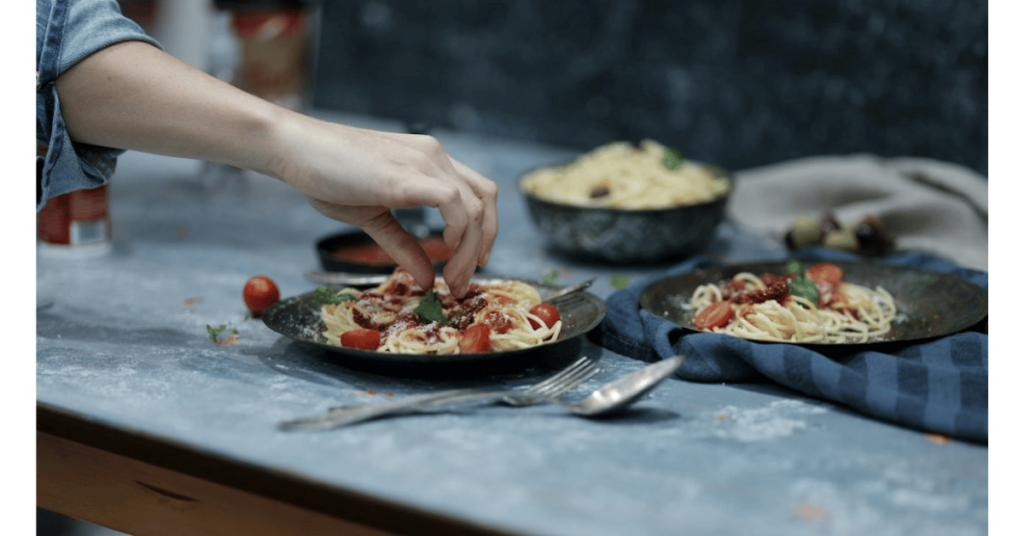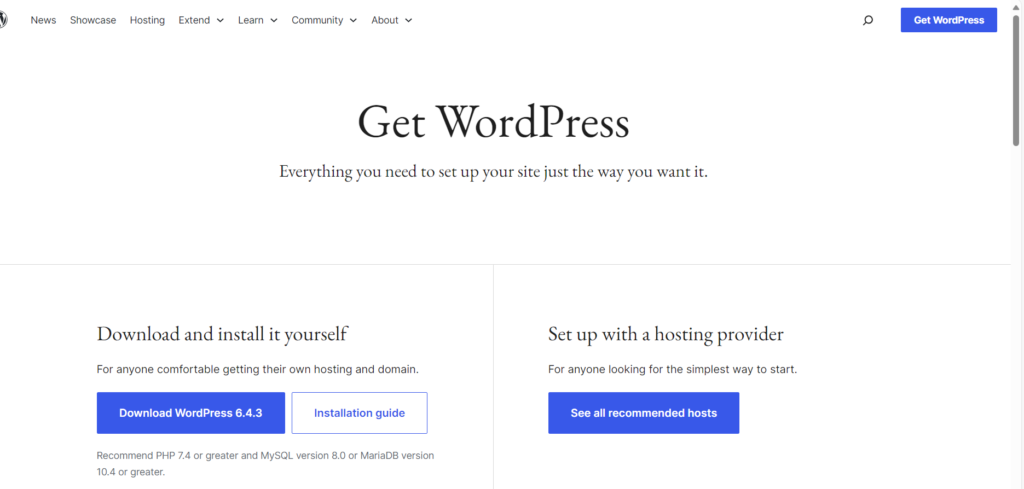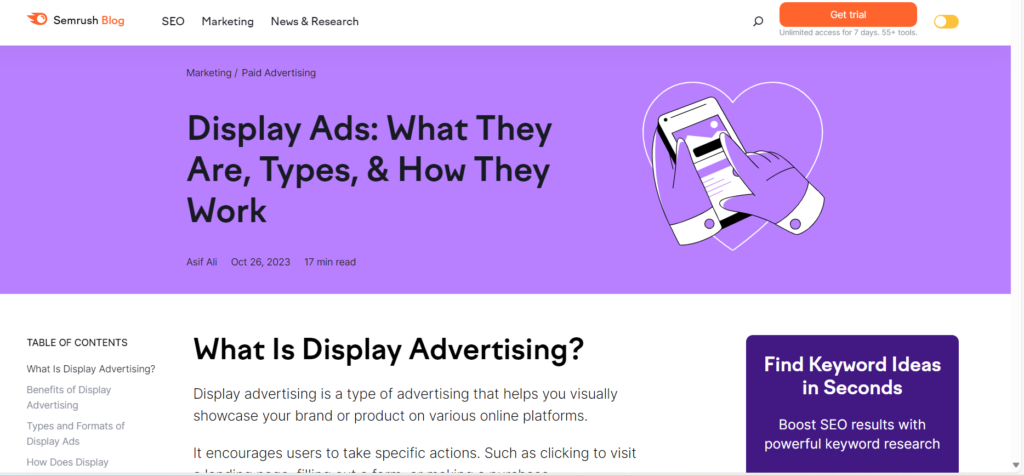How to Start Your Food Blog: Tips & Techniques

This article provides helpful advice on how to start your successful food blog, from choosing a platform to setting up content and promoting your blog.
Now
Creating your food blog can be a daunting task.
But with the right tips and techniques, beginners can quickly get started.
Are you a food enthusiast passionate about cooking and sharing your culinary creations with others?
Creating a food blog can be fun and rewarding to share your love for food.
You can connect with other food enthusiasts and turn your blog into a source of income.
Here are some tips on how to start your food blog.
Choose a Niche

Unsplash/rithwickpr
Before starting your food blog, deciding on a niche is essential.
This niche could be:
- a targeted type of cuisine,
- a particular dietary restriction,
- Or a particular cooking style.
Ask yourself…
What am I good at in the food space?
You can establish yourself as an expert in a niche and attract a particular audience.
For example, you could focus on vegan recipes or specialise in baking desserts.
Even after you’ve been through all that…
But how can you stand out in a crowded market of food blogs?
Here’s how to discover what makes your culinary voice unique:
Explore Your Passions
What sets your taste buds tingling? Are you a baking enthusiast, a health-conscious chef, or a champion of global cuisines?
Identifying what excites you in the food world provides a wellspring of inspiration. It ensures you’re genuinely enthusiastic about the content you create.
Consistency is the key.
Leverage Your Skills and Knowledge
Do you have a hidden talent for vegan adaptations of classic dishes?
Perhaps you’re a master at creating gluten-free delights or an expert on a specific regional cuisine.
Highlighting your expertise positions shows you are a credible source and attracts readers seeking specific knowledge.
Who seeks an amateur for advice?
Your expertise reigns supreme here.
Identify Gaps in the Food Blogosphere
What have you yet to see enough of?
Is a specific dietary need, cooking method, or cultural cuisine underrepresented in the blogosphere?
Filling a niche allows you to carve out your space and cater to a potentially underserved audience.
Consider Your Target Audience
Who do you envision reading your blog?
Are you targeting busy professionals seeking quick and easy meals? Or are you targeting families looking for budget-friendly recipes or adventurous food enthusiasts eager to explore new culinary territories?
Understanding your ideal reader helps tailor your content and niche to their interests and needs.
Experiment and Find Your Sweet Spot
Don’t be afraid to experiment! Test without ceasing…
Try different recipe styles.
Also, delve into various cuisines and see what resonates with you and your audience.
Analysing blog post engagement and reader feedback can provide valuable insights into your niche’s direction.
Here’s the deal…
Your niche doesn’t have to be set in stone.
As you explore and grow, your focus may evolve.
The key is to find a space that ignites your passion. A space that also allows you to share your unique views and resonates with your audience.
With careful consideration and some creativity, you’ll discover the perfect niche to fuel your successful food blog.
And I know you can do it.
Now that you have your niche, where are you meeting your audience?
Create a Name and Domain
Next, you must develop a catchy and memorable name for your food blog.
This name will also serve as your domain name.
So, make sure it’s available and accessible to remember.
Use a domain name registrar like GoDaddy to check availability and purchase your domain.

Choosing a name that reflects your niche and brand is also a good idea.
An example of a domain name, https://eatingplantbasedza.com
Design Your Blog
Once you have your name and domain, it’s time to design your blog.
Creating Your Blog Design
After deciding on your blog’s content, the next step is to design and build your blog to provide visitors with a great experience.
While you have the option to do your coding for the site from scratch, this can be time-consuming and resource-intensive.
Hiring a developer can produce a more polished product but can be costly.
For beginners, using a drag-and-drop website builder or a dedicated blogging platform is a quicker and easier option.
Choosing a Blogging Platform
There are blogging platforms like WordPress, Squarespace, or Drupal to create your food blog.

These platforms offer customisable templates and user-friendly interfaces, making designing your blog without coding knowledge easy.
You can also look at blog posts on creating food blogs by Tyler Moore or Blog with Ben. Their tutorials are easy to follow.
Ensure that you choose a visually appealing design that is easy to navigate for your audience.
Some Popular Food Blogs
You can model popular food blogs that are successful online, such as:
As you can see, their content is satisfying to the user.
Create Quality Content
The most important aspect of a food blog is the content.
Make sure to create high-quality, visually appealing content to engage your readers.
Your content must include well-written recipes, mouth-watering photos, and engaging stories about your food experiences.
You can also include videos and tutorials to add variety to your content.
Content for your blog must reflect your authority for that niche, experience, and reliability.
Your readers are coming for your expertise in your chosen field.
It’s important to consistently create new and exciting content to keep your readers coming back for more.
Effective Ways to Promote Your Food Blog
If you have started a food blog filled with delicious content, you may wonder how to attract more readers.
Here are some effective strategies to promote your food blog and engage a hungry audience:Utilise
Utilise Social Media
- Choose the right platforms:
Identify where your target customers spend time online.
Platforms like Instagram and Pinterest are great for sharing food photography.
Join Facebook groups related to food to connect with like-minded individuals.
- Post consistently and strategically:
Share high-quality visuals and engaging captions, and ask questions to keep your audience interested.
Use relevant hashtags to increase visibility.
- Run contests and giveaways:
Encourage engagement by offering prizes related to food. This strategy can attract new followers and promote your blog.
Optimise for SEO
- Conduct keyword research:
Identify keywords related to your content. Use keywords effectively in your blog posts, titles,
and meta descriptions.
- Optimise website structure:
Your website must be mobile-friendly. It must also be easy to navigate for better user experience and search engine visibility.
Leverage Content Marketing
- Guest blogging:
Contribute posts to other food blogs to reach more readers and build backlinks to your blog.
- Collaborate with other bloggers:
Partner with food bloggers for joint projects or social media campaigns to expand your reach.
- Email marketing:
Build a database to connect directly with your audience and share exclusive content.
Engage in Online Communities
- Participate in food-related forums and groups:
Share your knowledge and advice to establish credibility and connect with potential readers.
- Submit your blog to directories:
Increase visibility by submitting your blog to online directories and aggregators.
Stay Patient and Consistent
Building a successful food blog takes time. Create good content, engage with your readers, and analyse your results to refine your promotional strategies.
Promoting your blog is an ongoing process.
Implement these tips and techniques and stay dedicated to your food blog.
Doing so will enable you to attract a loyal audience and share your culinary creations.
Monetise Your Blog
Once you have established a following, you can start monetising your blog.
Make your passion for food into a profitable blog.
You only require a combination of delicious recipes, stunning visuals, and strategic monetisation methods.
Here are some ways to turn your food blog into a source of income:
Display Advertising

Partner with ad networks like Google AdSense to display targeted ads on your blog.
You earn revenue from Google whenever a visitor clicks on an ad.
Affiliate Marketing
Recommend kitchen tools, ingredients, or food-related services you genuinely love using affiliate links.
You earn a commission on every purchase made through your link.
Sponsored Content and Brand Deals
Work closely with brands to create sponsored posts or enter long-term partnerships to promote their products in exchange for payment or free products.
Sell Products
Consider selling your creations like cookbooks, meal plans, or packaged food products if you have a dedicated audience.
Offer Online Courses or Cooking Classes
Share your culinary expertise through online tutorials or host live cooking classes to generate income.
Leverage Email Marketing
Build your database and send targeted newsletters featuring new recipes, exclusive content, and promotions to drive engagement and potential sales.
Offer Consulting Services
If you have extensive culinary knowledge, offer consulting services to restaurants, food businesses, or individuals seeking food-related advice.
Create a Membership Program
Provide exclusive content, discounts, or community access to paying members for a recurring revenue stream.
Host Events or Competitions
Organise online or offline events like cooking workshops or recipe contests to connect with your readers. Generate income through ticket sales or sponsorships.
Sell Physical Merchandise
Design and sell branded merchandise like t-shirts, aprons, or kitchenware to expand your reach and create additional income streams.
Indeed…
Building a successful and profitable food blog takes time, dedication, and consistent effort.
Focus on creating high-quality content.
Build a loyal audience, and explore various monetisation options to find the perfect combination for your blog’s niche and goals.
Conclusion
Creating and starting a food blog can be a fun and fulfilling journey.
Following these tips of how you can start your food blog and share your love for food.
Have you started your food blog?
Share your experiences in the comments below.
